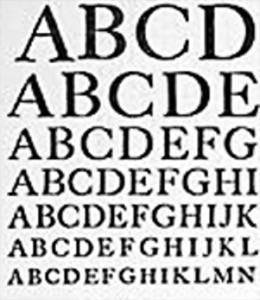Recently, a consortium of type designers and web designers have gathered around a new font format specification called Web Open Font Format (WOFF). The format would allow more typefaces to appear across the web and to be readable by both humans and search engines.

With support from Mozilla announced with the release of Firefox 3.6, and with the advocacy of leading type foundries such as Linotype, Emigre, and Hoefler & Frere-Jones, the question of web fonts might be satisfactorily resolved in the near future.
For some time, sIFR has been the go-to technology for web designers attempting to expand the Internet’s typographical vocabulary without sacrificing machine readability. However, adoption and use have been limited, and the roster of fully functional online fonts has remained a static and brief cast of players.
In a blog post, Mozilla contributor John Daggett wrote, “The WOFF format originated from a collabaration between the font designers Erik van Blokland and Tal Leming with help from Mozilla’s Jonathan Kew. Each had proposed their own format and WOFF represents a melding of these different proposals. The format itself is intended to be a simple repackaging of OpenType or TrueType font data, it doesn’t introduce any new behavior, alter the @font-face linking mechanism or affect the way fonts are rendered. Many font vendors have expressed support for this new format so the hope is this will open up a wider range of font options for web designers.”
Of course, Firefox 3.6 will be the first browser to support the new format, so designers will need to include @font-face rules for other browsers, at least for the time being. Not surprisingly, creating such rules for Internet Explorer is more complicated than for other browsers, as IE only plays nicely with Embedded Open Type faces and a limited set of @font-face rule descriptors.
Internet Explorer wonkiness aside, WOFF is a widely supported and relatively prominent step in the right direction, and we hope more browser versions will support the format. It’s about time for web pages to lose their homogeneity, for designers to gain more tools for brand and personal expression, for search engines to read more fonts, and for users to have richer browsing experiences.
Interested web developers and designers should also check out woffTools, a Python package for examining and manipulating WOFF files. This package also contains a set of command line tools for verifying and examining the files.

















